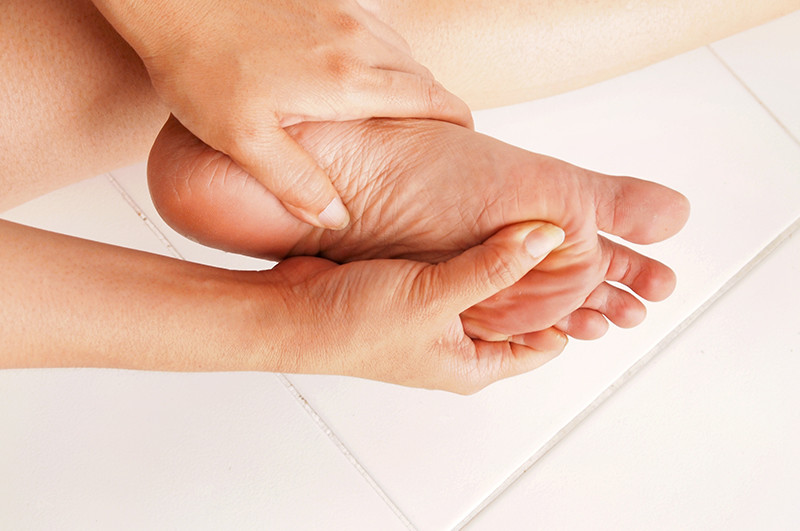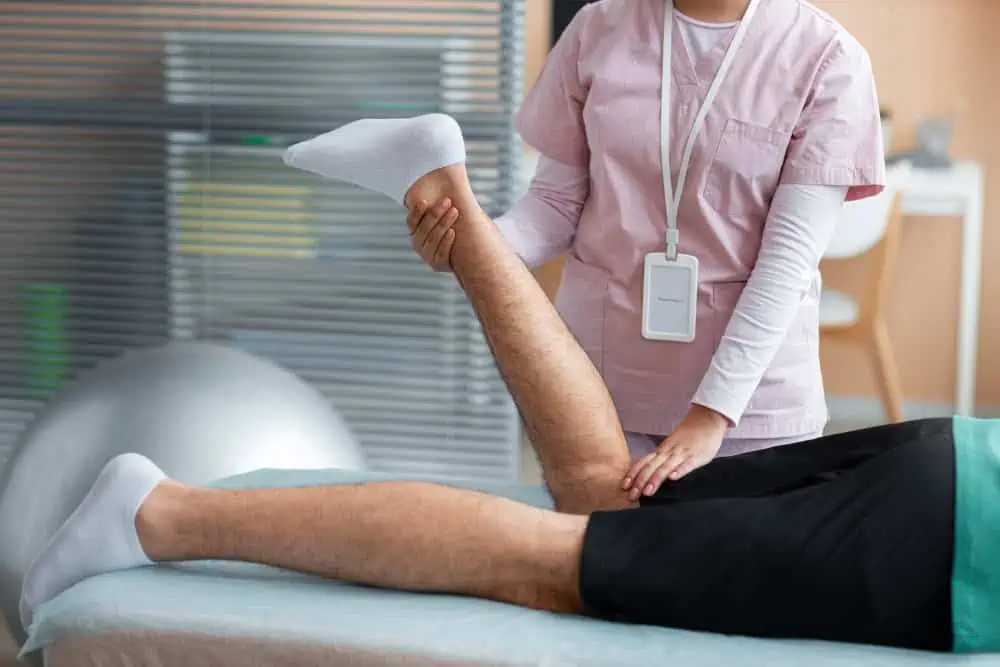In diabetics, neuropathy is defined as a loss of protective sensation. The condition occurs in what we call and stocking and glove distribution. It starts at the distal ends of the toes and fingers, and moves proximally up the foot/hand into the leg/arm. While there are many causes of peripheral neuropathy, diabetes is the most common.
Neuropathy can occur in several forms. The most common is sensory neuropathy. This is a change in the ability of the patient to feel their feet and hands. Starting in a stocking and glove distribution, a patient will not feel items touching their toes and feet. Over time, patient can step on objects such as glass shards, nails, or tacks, and will not feel it. This is a significant risk for infections and amputation.
Neuropathy can also occur as a motor neuropathy. This is a loss of function in the distal most muscles, and can be combined with sensory neuropathy to be called sensorimotor neuropathy. The most common examples of this include the development of hammertoes in a neuropathy foot, or ankle contractures causing ulcerations in the ball of the foot.
Lastly, neuropathy can cause an autonomic issue. This will be symptoms such as a loss of ability to sweat or release oils (also called sebum) from the skin. This is the type of neuropathy that also involves the cardiovascular system, gastrointestinal system, and genitourinary system.
With loss of sensation and function, patients become higher risk for infections, wounds and amputation. Daily foot examinations, proper shoe gear, and regular diabetic foot care can prevent many problems. So that begs the question, if I can’t feel it, why does it hurt?
60-70% of diabetics will eventually suffer from this condition. The best way to think about it, is to use the telephone as an analogy. If you are on the phone, and there is static, you can still hear, right? The more static, the louder you have to yell to have the person on the other end hear you, until eventually there is so much static that you can’t hear anything, and they you hang up. This is what happens with your nerves.
Each and every nerve in your body is connected directly to your brain. Millions and millions of individual wires, from every aspect of your body, connected directly to your brain. As neuropathy advances, the static to your brain increases. Patients perceive this as neuropathic symptoms, burning, tingling, fire, ices, etc. The louder the static, the more symptoms, until finally your brain hangs up, and then you have a complete loss of sensation. This basically means that you can remove portions of your foot without anesthesia and not know it.
Treatments for painful diabetic neuropathy include proper glucose control, diet, exercise, and many different medication options. You may have even seen a television commercial for Lyrica for example. There are also sensory feedback options, cold laser and other light treatments, and even surgical options for releasing the nerves.
Best treatment for diabetic Neuropathy is prevention. Good glucose control, exercise, and preventive foot care are essential. Treatment once you have symptoms has been successful, but not for everyone. You may not know you even have it. The doctors at WeTreatFeet are well versed in this process and can offer you many cutting-edge treatments.




